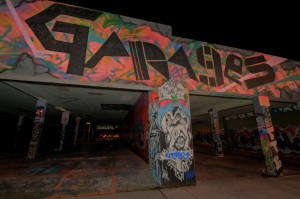What is more important: self or community? (English Language Arts)
Stage 1 – Desired Results:
Established Goals:
RL.9-10.2: Determine a theme or central idea of a text and analyze in detail its development over the course of the text, including how it emerges and is shaped and refined by specific details; provide an objective summary of the text.
RL.9-10.3: Analyze how complex characters (e.g., those with multiple or conflicting motivations) develop over the course of a text, interact with other characters, and advance the plot or develop the theme.
W.9-10.9: Draw evidence from literary or informational texts to support analysis, reflection, and research.
SL.9-10.5: Make strategic use of digital media (e.g. textual, graphical, audio, visual, and interactive elements) in presentations to enhance understandings of findings, reasoning, and evidence and to add interest.
Anticipated Language Demands:
Vocabulary: various words from Romeo & Juliet, character, choice, agency.
Function: summarize, interpret, synthesize, justify.
Discourse: Plays, novels, visual symbols in neighborhood
Understandings:
Students will understand that…
- People/characters are motivated by desires.
- Our identity affects our community and vice-versa.
- People/characters have agency.
- There can be conflict between the self and the community.
- Different cultures value ideas of self and community in different ways.
- Certain community members can control/attempt to control individuals’ expression of identity.
Unit/Essential Questions:
- What is more important: self or community?
- How does the community affect our self identify?
- How do individuals affect our community?
- How is self-expression limited by those in power in our neighborhood?
- How do multiple cultures and backgrounds add to the complexity or our neighborhood?
Learning Targets:
Knowledge:
- Students will be able to identify key characters in Romeo & Juliet.
- Students will be able to identify a key theme in all our readings: self and the community.
Reasoning:
- Students will be able to analyze the motivations of the main characters in multiple works.
- Students will be able to compare the characters and their motivations across two works of literature.
- Students will be able to analyze the theme “self and community.”
- Student can choose and explain their reasoning for a visual and written expression of their identity and their community.
Product:
- Students will be able to create and present a movie that synthesis our central text, themselves, and the community.
Stage 2 – Assessments:
Formative assessments will incude classroom discussion, notes, and journal entries.
Main assessments will be a comparative essay, scripts and storyboards for a video, and the video itself. Each project will have formative assessment check-points woven in, although the final project will be summative.
Technologies:
Word Processing:
- Directed/Guided Reading; Drafting; Revising; Editing; Writing nonfiction
- Students could use word processing to create reading guides for the text. By both coming up with questions and answering them, students are anticipating what will come next and using a tool to guide their reading and understanding of text. They could also use them to draft and write their essays and scripts.
- I would need to investigate how to create good reading guides so I could give clear and simple directions. I would need to create a rubric or list of what goes in to a good reading guide so students can monitor their progress.
Wikis:
- Reading Discussion; Writing other forms of text
- Students could use wikis to add to their knowledge and insights into the classroom reading and the literature circle readings. They could also use a separate wiki to store and share their growing knowledge of the community.
- I need to learn how to set up a wiki. I would need to survey the knowledge of my students on using them and provide supports or teach students how to use them.
Storyboard Mapping:
- Sequencing/Outline/Storyboarding
- Students could use this technology to make storyboards for the books they are reading. They could also use them to outline their movie.
- I have no idea how to use storyboard mapping so I would need to research that.
Concept Mapping Software
- Higher-order Webbing/Clustering
- Students could use the software to organize their ideas for their essays.
- I have no idea how to use or find concept mapping software so I would have a lot to learn.
Digital & Audio Video Recording
- Performing/Performances
- Students would record aspects of their community and their audio performances of their scripts for the final product/assessment.
- The biggest issue with this one is finding/getting the right equipment and then making sure I am familiar with it. Surveying the students to determine how much I would need to teach them about using it.
Video Editing Software
- Performing/Performance
- Students would use the video editing software to create a movie from their audio and visual recordings. This would be the final synthesis of their knowledge on our main text, their community, and themselves.
- Again the difficulties would be finding the resources to do this. I would want to survey the students to determine what I would need to teach. I might want to put together a tutorial or make a sample video.




Pingback: Unit plan & ideas for meaningfully integrating technology | Investigations in Our Town